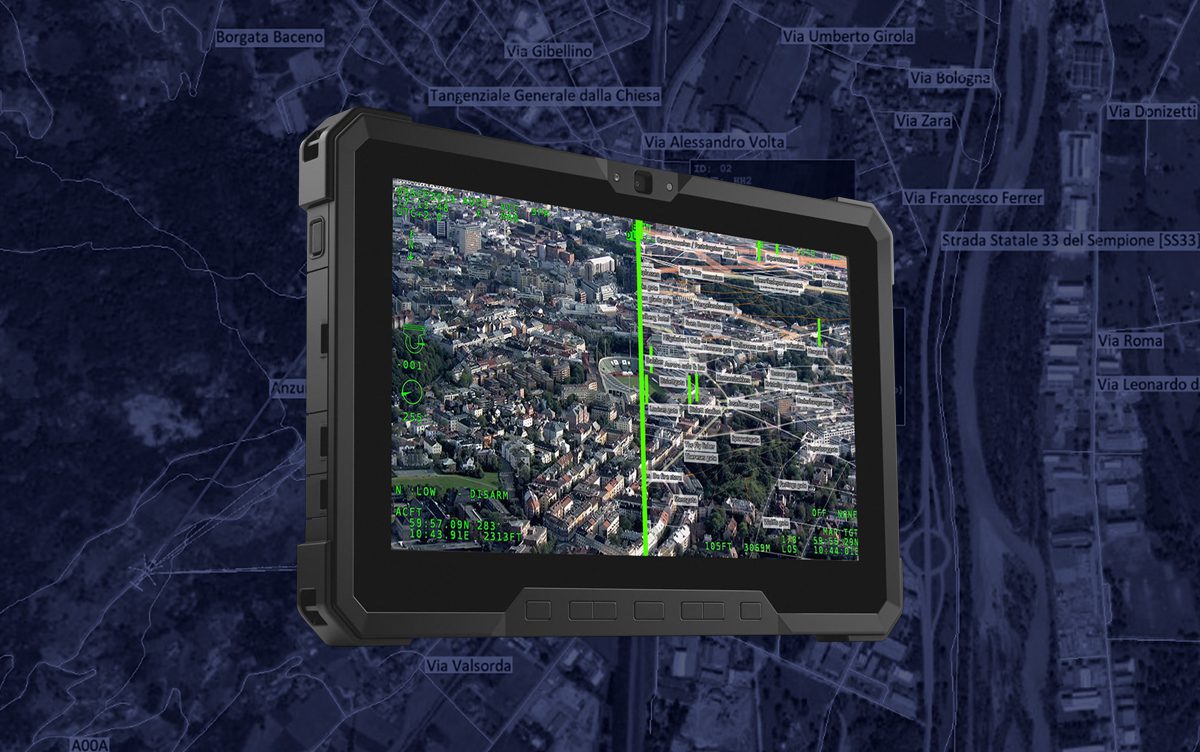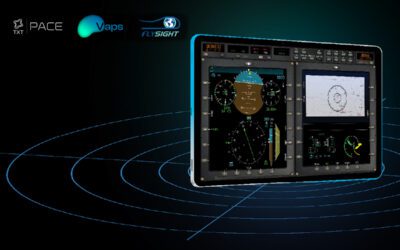What is an Augmented Reality Display? Technology & Innovative Features
High-speed communications and computer processing capabilities have advanced exponentially in recent years. The introduction of Virtual Reality (VR) and Augmented Reality (AR) have both contributed to the rapid growth of next-generation technology and augmented reality display systems, particularly in avionics.
The boundaries between real-time visual information and AR overlays have been removed using familiar technology that can be grandfathered into existing systems. AR displays are proving invaluable in operational applications and training.
But what exactly is an AR display? In this article, we will examine the definition of an AR display and the different types on offer. We will examine how it works and discuss its applications both today and in the future, focusing on AR training in the avionics industry and looking at case studies demonstrating how AR reality displays are being used.
Keep reading for more information on how OPENSIGHT’s Augmented Reality plays a vital role in developing the next generation of Enhanced Reality packages.
What is an augmented reality display?
AR combines advanced technology and computer programming with real environments to enhance and create a fusion between simulated and real environments. For example, a topographical map of an area could be overlayed with additional information layers containing more in-depth location information, such as exact address codes.
The aim is to create a far more detailed environmental experience that allows the user to access both the real-time and the simulated information simultaneously.
The big difference between Virtual Reality and AR is the level of user involvement. VR is a totally immersive system that separates the user from the real world around them. AR allows the user to continue operating in a real-world situation but with the added advantage of extra layers of accessible information.
The science behind AR displays
For AR headsets or mounted displays such as augmented reality heads-up displays, three key elements are required. Primarily, a light source is needed – in this case, the display itself. Optical components such as a lens ensure that the receiver (the human eye) can focus on the information being presented.
AR screens use microdisplays as their light source, which use OLEDs or LCDs. To achieve a 3D effect for a head-worn AR, two displays deliver a separate image to each eye to create a 3D perspective using stereoscopy. Advances in holographics are bringing an exciting new level of definition and complexity to AR displays, but their use at the moment is probably most confined to gaming and more immersive VR systems.
One area where head-worn AR display systems have encountered challenges is aberrations such as field curvature, axial chromatic aberration, and spherical aberration. As a result, aberration control has been a significant factor in influencing the development of head-worn AR displays in particular, as without effective control, the image becomes blurry and distorted.
Different types of AR displays – HUDs
A HUD is a transparent display that delivers data without the observer needing to look at an alternative screen or change their viewpoint. In a helicopter, for example, the pilot is presented with data such as altitude, speed and direction but can still see through the HUD without altering their forward view.
The most commonly known example of an AR display is a heads-up system. Heads-up displays, or HUDs, were first developed for military aviation and still have an essential role in modern-day avionics.
The HUD system is the most effective way of delivering information directly to the user without affecting their ability to interact with the real world simultaneously. This makes HUDs particularly user-friendly.
HUDs are integral to operating systems for essential services, including firefighting, aviation, law enforcement and the military. The ability to assess a situation not just through visual real-time input but by superimposing additional data layers can be mission critical, especially in situations where the visual information on offer may have been impaired.
For example, a helicopter crew assessing a forest fire may have limited visual information due to large amounts of smoke and haze. An additional layer of data that can be relied on, including topographical information, could be crucial to identify high-risk areas and aid in search and rescue operations.
The same applies to law enforcement, particularly during surveillance operations. Using a system such as FlySight’s OPENSIGHT allows users to access crucial information and identify and fix a target – even a moving vehicle, which can be isolated from any ‘background noise’ by its registration code. This elevates the chances of mission success, even in built-up and urban areas.
Within the law enforcement arena, AR displays can also help with traffic management and control, as well as critical events monitoring. The capability to eliminate information that is not relevant ensures the best use of time as well as a far more refined approach to the mission. Both of these not only save time but also money, as an aerial unit can be utilised with much greater efficiency.
In aviation, augmented reality displays have been applied to a multitude of areas, from aircraft ramp handling to using AR displays to aid in dealing with wiring harness repairs and servicing and aircraft assembly. A bulkhead may look like a blank surface visually, but by adding AR displays, you can look ‘beneath the skin’ of the aircraft and see the systems in situ. This additional layer of information can help engineers pinpoint crucial components and isolate faults faster and more effectively without having to strip an entire aircraft back to the bone. AR displays allow technicians and maintenance crews to carry out ‘keyhole surgery’ that is more cost and time-efficient.
One of their key uses is in training, enabling pilots, technicians, and engineers to get to grips with the intricacies of a new aircraft in the shortest possible time.
HUDs are now used in a myriad of scenarios and have entered several civilian marketplaces, most notably the automotive industry, where they are a strong selling point for luxury cars.
Wearable AR in a civilian role
Wearable AR displays have been made for the civilian market, but they do seem to encounter some issues – mainly cost, practicality, and usability. Consumers remain unconvinced that they need a personal head-worn AR display for everyday use.
One exception to this that has seen any commercial success has been in the gaming market, where AR head units have made inroads. However, it is VR that is more fine-tuned to gaming, creating a much more immersive sensation and putting the wearer “inside” the game. AR isn’t designed for a totally immersive experience, so has its limitations.
Head-worn units may have a role to play in some levels of entertainment, such as tourism, where a wearable augmented reality display may enhance a visitor’s experience of an attraction. It could, for example, also work well in an art gallery or museum, where the AR could add layers of information to a painting or an exhibit.
There is also the opportunity to utilise head-worn AR displays in a medical setting to aid surgical procedures, for example, superimposing assistance or adding a layer of information, such as the layout of a body’s nervous or blood system.
Customisable AR display screens with OPENSIGHT
Touch-screen AR displays work particularly well in airborne platforms such as helicopters. Selectable layers and 3D customised rendering make it possible to fine-tune AR displays to suit the exact needs of the end-user. This principle is the driving force behind FlySight’s innovative OPENSIGHT system.
But just like the technology, OPENSIGHT is continuously evolving. The OPENSIGHT Enhanced Reality incorporates video processing functionalities for video enhancement, such as contrast enhancement and super-resolution, into the package.





